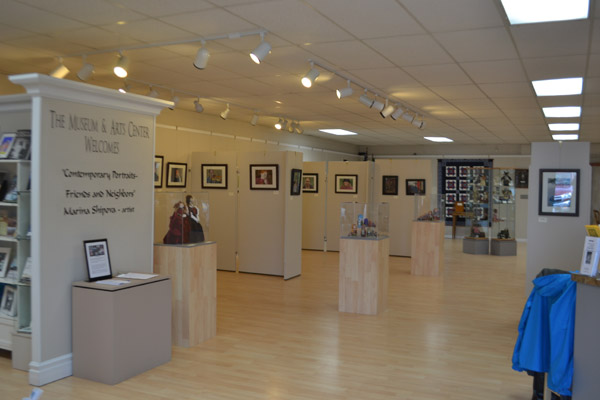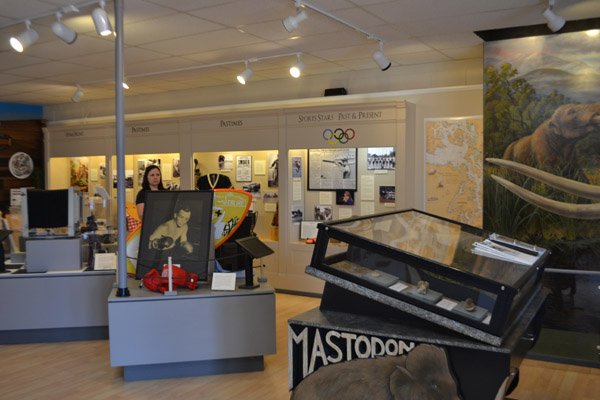I’m embarassed to admit that I’ve lived in Sequim two years before I finally darkened the doorstep of the Museum & Arts Center (MAC). Partly, I didn’t know what to expect. And, frankly, I’m accustomed to big museums where I can melt away, be anonymous, and take it in as I wish, mistakenly admiring a random fire alarm if it suits me.
The MAC is small, comfortable, and pleasant. The art above has just been changed out for a juried art show and sale, part of the annual Sequim Irrigation Festival.
There are also history exhibits – human history of the region and a small exhibit on the Manis Mastodon, a fascinating archaeological find near Sequim that recently established human habitation here fully 13,800 years ago. The Manis site was excavated in the late 1970s and one of the first rib bones of the mastodon found at the site revealed a spear point embedded in the bone. CT scans last year confirmed that the point had been finely worked by human hands; DNA tests established human habitation 800 years before the Clovis peoples who had previously been thought to be the earliest inhabitants of North America. Clare Manis Hatler, on whose property the dig took place, doesn’t exaggerate when she says, “I’ve got the oldest bones around.” Several are exhibited at MAC.

